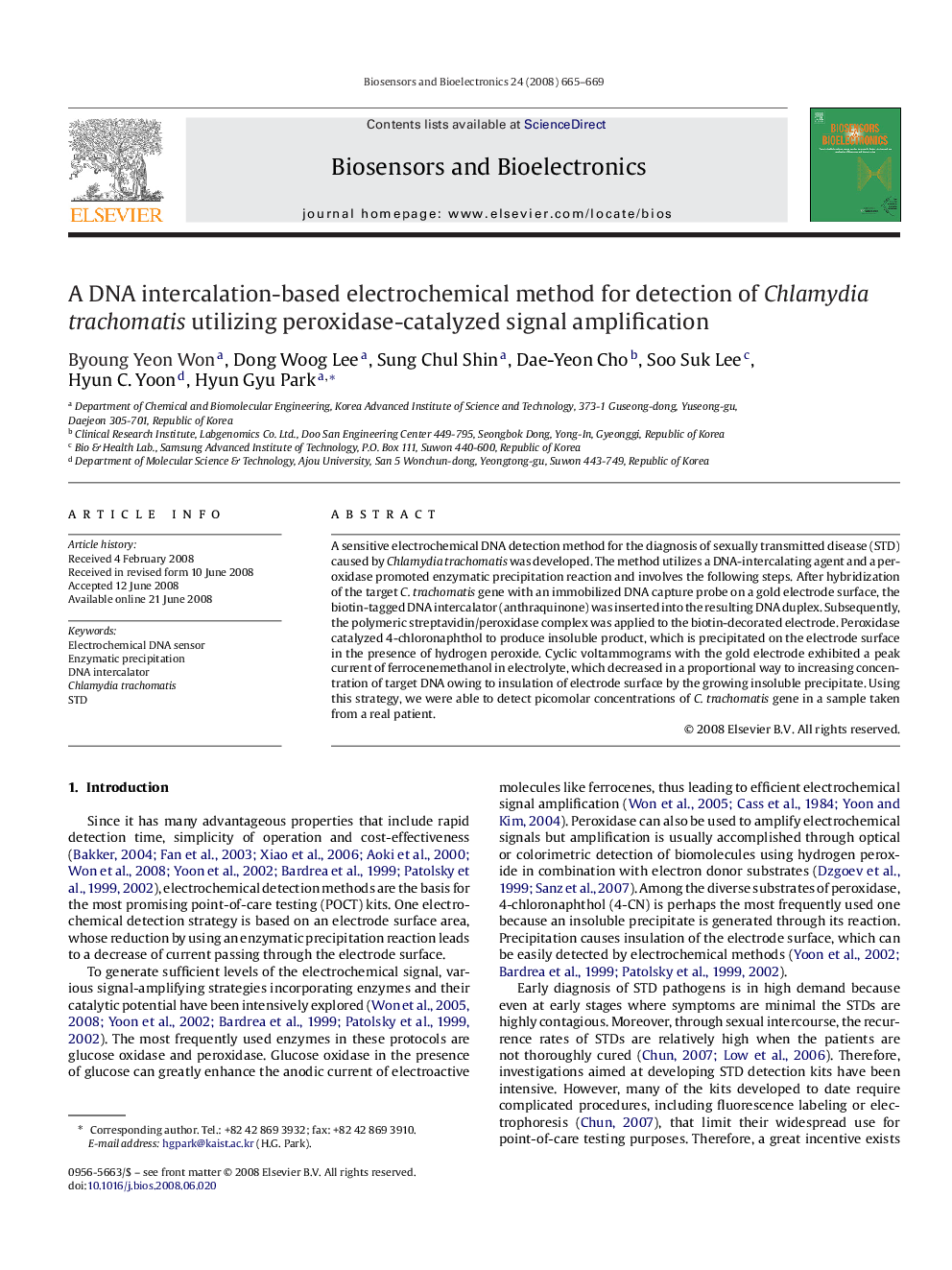| Article ID | Journal | Published Year | Pages | File Type |
|---|---|---|---|---|
| 869875 | Biosensors and Bioelectronics | 2008 | 5 Pages |
A sensitive electrochemical DNA detection method for the diagnosis of sexually transmitted disease (STD) caused by Chlamydia trachomatis was developed. The method utilizes a DNA-intercalating agent and a peroxidase promoted enzymatic precipitation reaction and involves the following steps. After hybridization of the target C. trachomatis gene with an immobilized DNA capture probe on a gold electrode surface, the biotin-tagged DNA intercalator (anthraquinone) was inserted into the resulting DNA duplex. Subsequently, the polymeric streptavidin/peroxidase complex was applied to the biotin-decorated electrode. Peroxidase catalyzed 4-chloronaphthol to produce insoluble product, which is precipitated on the electrode surface in the presence of hydrogen peroxide. Cyclic voltammograms with the gold electrode exhibited a peak current of ferrocenemethanol in electrolyte, which decreased in a proportional way to increasing concentration of target DNA owing to insulation of electrode surface by the growing insoluble precipitate. Using this strategy, we were able to detect picomolar concentrations of C. trachomatis gene in a sample taken from a real patient.
